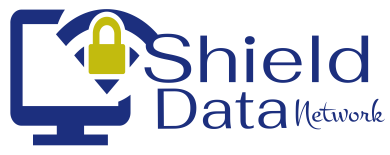
HIPAA COMPLIANCE AND INFORMATION TECHNOLOGY SYSTEM

HIPAA COMPLIANCE AND INFORMATION TECHNOLOGY SYSTEM
Heartbreakingly, the medical industry and patients alike have been plagued by many crimes, including patient identity theft and health information fraud.
In response to this dilemma, the Department of Health and Human Services (HHS) released Health Insurance Portability and Accountability Act of 1996 (HIPAA) in 1996. HIPAA was enacted to protect individual health information as well as maintain confidentiality.
However, with time, we have learned that while many security measures help achieve this goal, they can be challenging to implement. In light of these findings, we have compiled a list of four steps we believe will lead you to compliance and security of your Information Technology system in the future.
Heartbreakingly, the medical industry and patients alike have been plagued by many crimes, including patient identity theft and health information fraud.
In response to this dilemma, the Department of Health and Human Services (HHS) released Health Insurance Portability and Accountability Act of 1996 (HIPAA) in 1996. HIPAA was enacted to protect individual health information as well as maintain confidentiality.
However, with time, we have learned that while many security measures help achieve this goal, they can be challenging to implement. In light of these findings, we have compiled a list of four steps we believe will lead you to compliance and security of your Information Technology system in the future.

The first step to effective HIPAA compliance and security is to enforce the security of your network. The fastest way to ensure that people are protected from intrusion and unauthorized access is to have secure password policies.
This helps prevent individuals from hacking your data, which would allow them access to sensitive information. One of these policies should enable users to have a minimum of eight characters in their password and a combination of letters, numbers, and symbols. Additionally, passwords should be changed every three months; this makes it difficult for hackers to attempt unauthorized access. A second policy requires two-factor authentication on all devices that go through the network.

The next step in achieving HIPAA compliance and security is a robust endpoint security platform.
The Health Insurance Portability and Accountability Act of 1996 (HIPAA) details federal rules for safeguarding the privacy and security of health information. The HIPAA Security Rule mandates the implementation of physical, electronic, and administrative safeguards to protect electronic protected health information (ePHI).

The first step to effective HIPAA compliance and security is to enforce the security of your network. The fastest way to ensure that people are protected from intrusion and unauthorized access is to have secure password policies.
This helps prevent individuals from hacking your data, which would allow them access to sensitive information. One of these policies should enable users to have a minimum of eight characters in their password and a combination of letters, numbers, and symbols. Additionally, passwords should be changed every three months; this makes it difficult for hackers to attempt unauthorized access. A second policy requires two-factor authentication on all devices that go through the network.

The next step in achieving HIPAA compliance and security is a robust endpoint security platform.
The Health Insurance Portability and Accountability Act of 1996 (HIPAA) details federal rules for safeguarding the privacy and security of health information. The HIPAA Security Rule mandates the implementation of physical, electronic, and administrative safeguards to protect electronic protected health information (ePHI).

The third step in achieving HIPAA compliance and security is to use proper encryption.
Without proper encryption, hackers can potentially steal information from encrypted protocols such as HTTPS, which is difficult to monitor or track. Encryption can also be achieved using a VPN, which masks the explicit data source and IP addresses. However, this should only be done when certain amounts of sensitive data are being sent over the internet or if it's being sent across protected networks. Finally, encryption should be an automatic function so that hackers won't have an easy time cracking it or targeting it in the first place.
Microsoft Azure cloud is HIPAA-compliant utilizing security controls in their products and services. Microsoft Azure Information Protection Service helps organizations, such as Shield Data Network, LLC to safeguard ePHI with encryption, masking, activity logging, and audit reporting. Their encryption key management service provides a secure data protection environment by encrypting data at rest on Azure storage.

Finally, an effective DLP system would, as the name suggests, prevent data from being lost by monitoring where sensitive data is being stored, who it's being shared with, and if it's being accessed or sent over unsecure networks.
It can also alert users who send sensitive data to the wrong recipient or share information in an unsecured environment.

The third step in achieving HIPAA compliance and security is to use proper encryption.
Without proper encryption, hackers can potentially steal information from encrypted protocols such as HTTPS, which is difficult to monitor or track. Encryption can also be achieved using a VPN, which masks the explicit data source and IP addresses. However, this should only be done when certain amounts of sensitive data are being sent over the internet or if it's being sent across protected networks. Finally, encryption should be an automatic function so that hackers won't have an easy time cracking it or targeting it in the first place.
Microsoft Azure cloud is HIPAA-compliant utilizing security controls in their products and services. Microsoft Azure Information Protection Service helps organizations, such as Shield Data Network, LLC to safeguard ePHI with encryption, masking, activity logging, and audit reporting. Their encryption key management service provides a secure data protection environment by encrypting data at rest on Azure storage.

Finally, an effective DLP system would, as the name suggests, prevent data from being lost by monitoring where sensitive data is being stored, who it's being shared with, and if it's being accessed or sent over unsecure networks.
It can also alert users who send sensitive data to the wrong recipient or share information in an unsecured environment.

